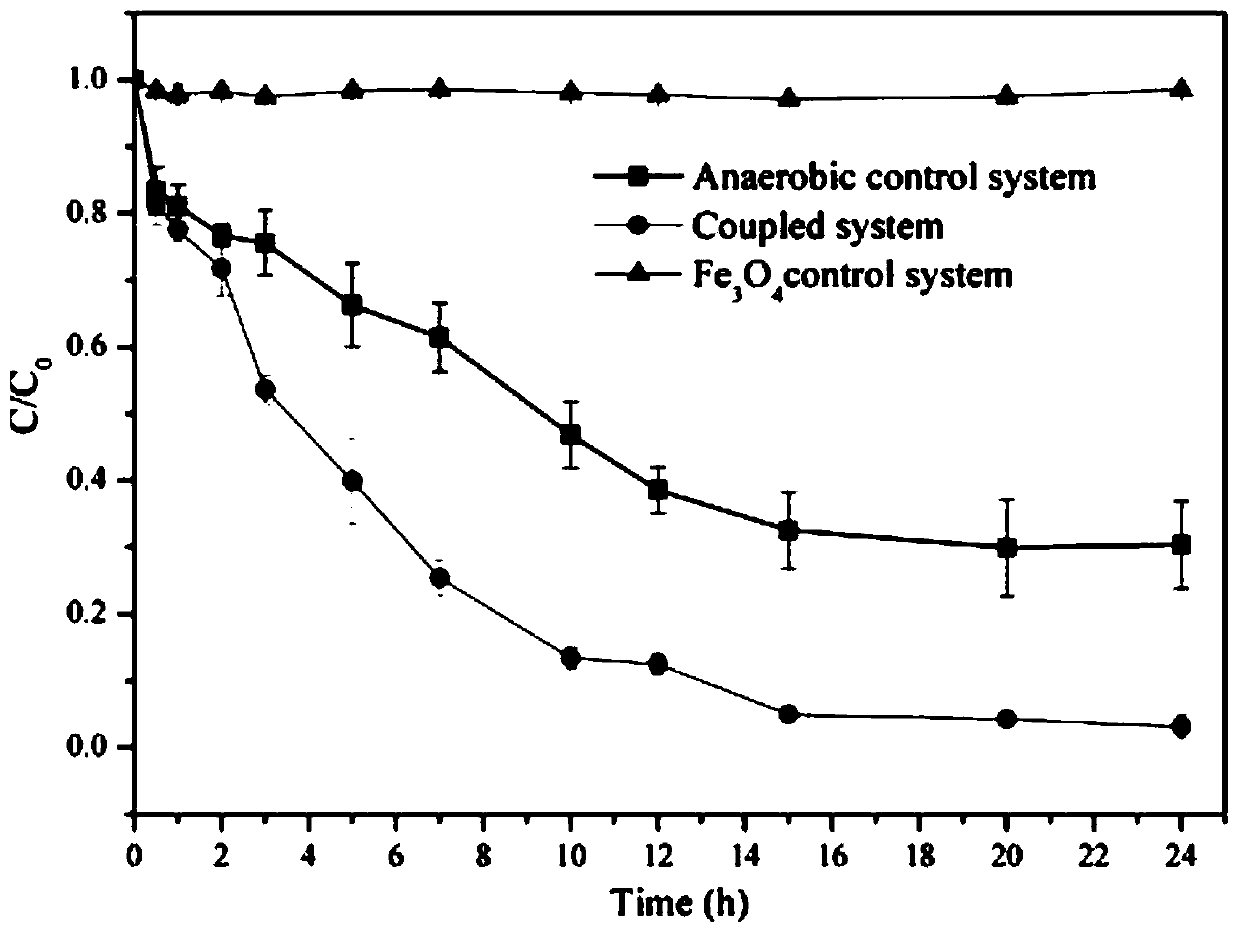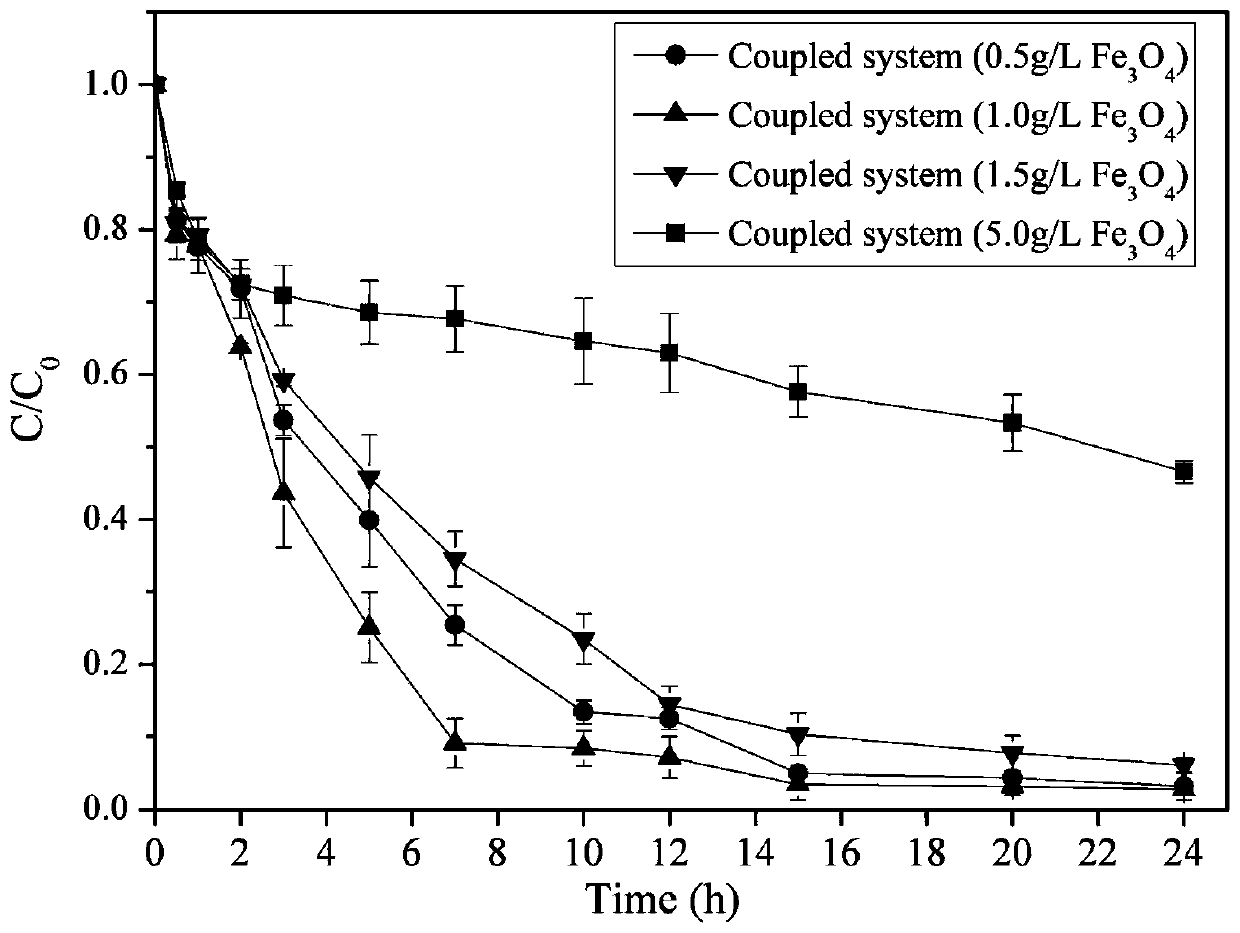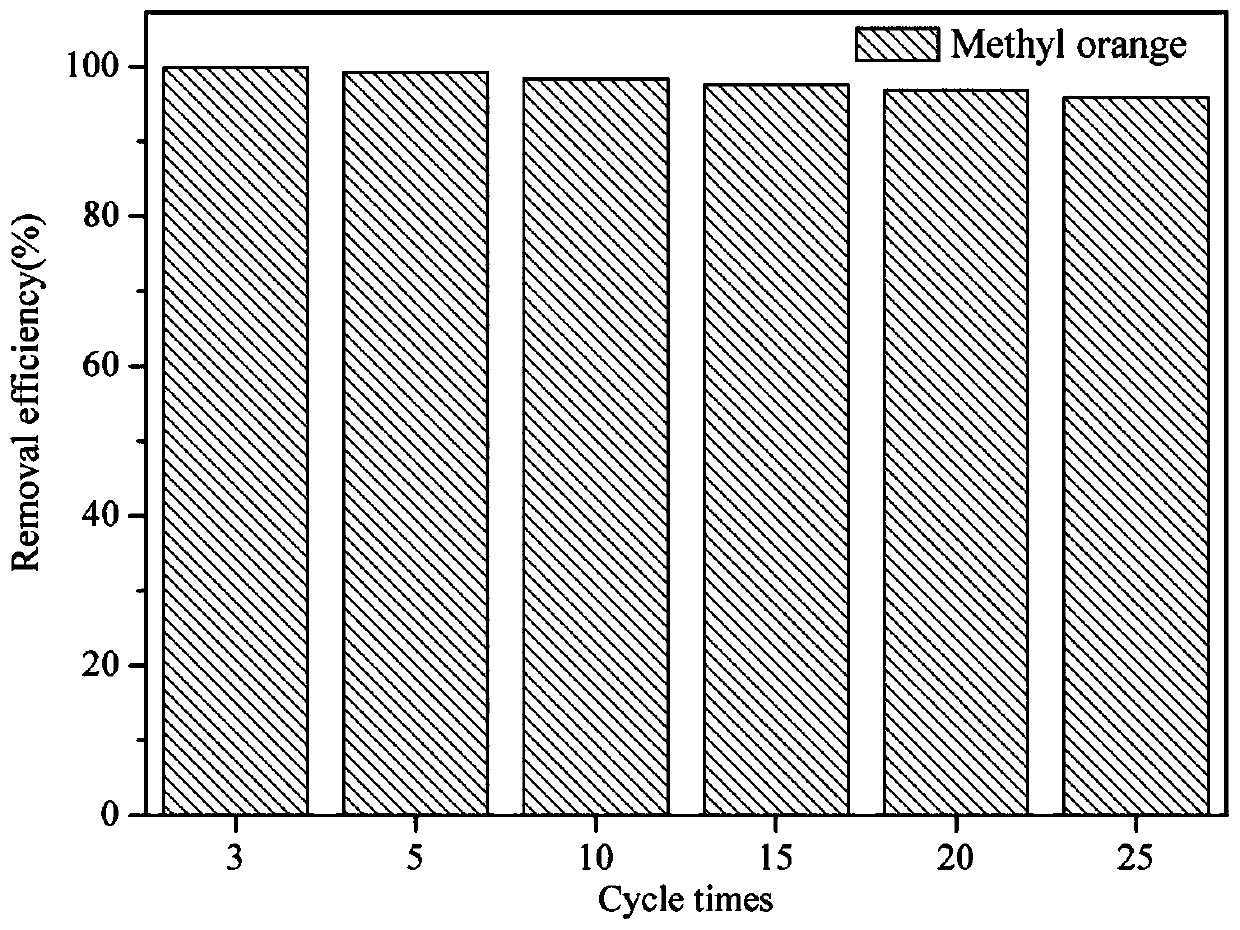Treatment method for enhancing degradation of methyl orange by anaerobic organisms
An anaerobic biology and treatment method technology, which is applied in the field of strengthening the treatment of anaerobic biodegradation of methyl orange, can solve problems such as lack, and achieve the effects of reducing treatment costs, improving degradation and decolorization efficiency, and reducing costs.
- Summary
- Abstract
- Description
- Claims
- Application Information
AI Technical Summary
Problems solved by technology
Method used
Image
Examples
Embodiment 1
[0028] Add 80mL of wastewater containing methyl orange with a concentration of 50mg / L into a 100mL anaerobic bottle, fill it with high-purity nitrogen to exhaust the residual oxygen in the wastewater to an anaerobic state, and add 20mL of domesticated anaerobic sludge (sludge Mud MLSS is 15.6g / L), COD concentration is 9.78mg / L sodium acetate and 0.5g / L nano Fe 3 o 4 , sealed anaerobic bottle, and constructed an iron oxide coupled anaerobic biological system. According to the same steps above, only the same amount of anaerobic sludge and only nano-Fe 3 o 4 The anaerobic biological control system and the iron oxide control system. The specific composition of each system is shown in Table 1.
[0029]
[0030]
[0031] The above three systems were placed in a constant temperature oscillator for full reaction, the control speed was 200r / min, and the temperature was 35°C. During the reaction period, at the set sampling time point, the water sample was filtered with a 0.22...
Embodiment 2
[0035] Add 80mL of wastewater containing methyl orange with a concentration of 50mg / L into a 100mL anaerobic bottle, fill it with high-purity nitrogen to exhaust the residual oxygen in the wastewater to an anaerobic state, and add 20mL of domesticated anaerobic sludge (sludge Mud MLSS is 15.6g / L), COD concentration is 9.78mg / L sodium acetate and 0.5g / L nano Fe 3 o 4 , sealed anaerobic bottle, and constructed an iron oxide coupled anaerobic biological system. Following the same steps above, add 1g / L, 1.5g / L and 5g / L nano-Fe to the anaerobic sludge respectively. 3 o 4 , to build a coupling system with different dosages. The specific composition of each system is shown in Table 2.
[0036]
[0037]
[0038] The above four systems were placed in a constant temperature oscillator for full reaction, the control speed was 200r / min, and the temperature was 35°C. During the reaction period, at the set sampling time point, the water sample was filtered with a 0.22 μm filter m...
Embodiment 3
[0041] to nano-Fe 3 o 4 The coupling system with a dosage of 1g / L, under the action of an external magnetic field, conducts nano-Fe 3 o 4 separation and extraction. For the obtained nano-Fe 3 o 4 After cleaning its surface with 2% NaOH solution, the obtained nano-Fe 3 o 4 Join the coupling system again to explore nano-Fe 3 o 4 Recyclability and reuse of methyl orange degradation in a coupled system.
[0042] The result is as image 3 As shown, with the nano-Fe 3 o 4 With the increase of the number of cycles, the degradation effect of the coupling system on methyl orange is relatively stable. When the number of cycles reached 15, the removal rate of methyl orange by the coupling system was 95.57%. When the number of cycles was further increased to 25, the removal rate of methyl orange by the coupled system was only slightly decreased to 94.71%. The above results show that the added nano-Fe 3 o 4 It is relatively stable in the coupling system and can be reused ma...
PUM
| Property | Measurement | Unit |
|---|---|---|
| concentration | aaaaa | aaaaa |
| Residual rate | aaaaa | aaaaa |
Abstract
Description
Claims
Application Information
 Login to View More
Login to View More - R&D
- Intellectual Property
- Life Sciences
- Materials
- Tech Scout
- Unparalleled Data Quality
- Higher Quality Content
- 60% Fewer Hallucinations
Browse by: Latest US Patents, China's latest patents, Technical Efficacy Thesaurus, Application Domain, Technology Topic, Popular Technical Reports.
© 2025 PatSnap. All rights reserved.Legal|Privacy policy|Modern Slavery Act Transparency Statement|Sitemap|About US| Contact US: help@patsnap.com



